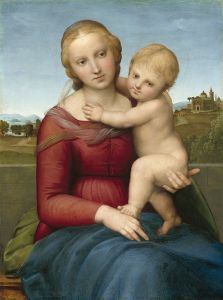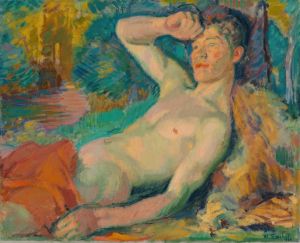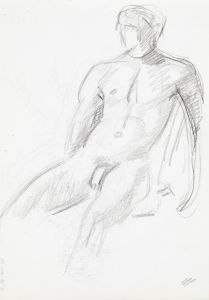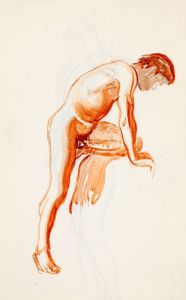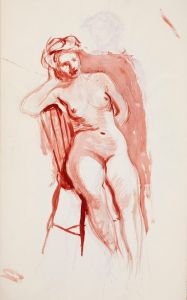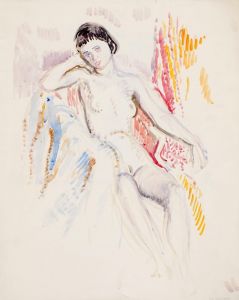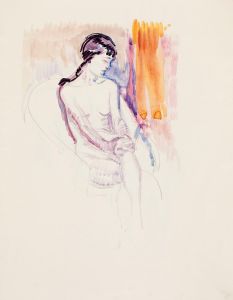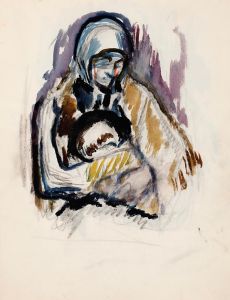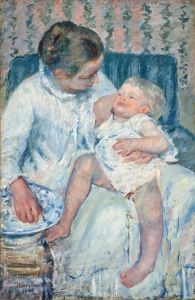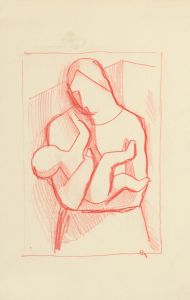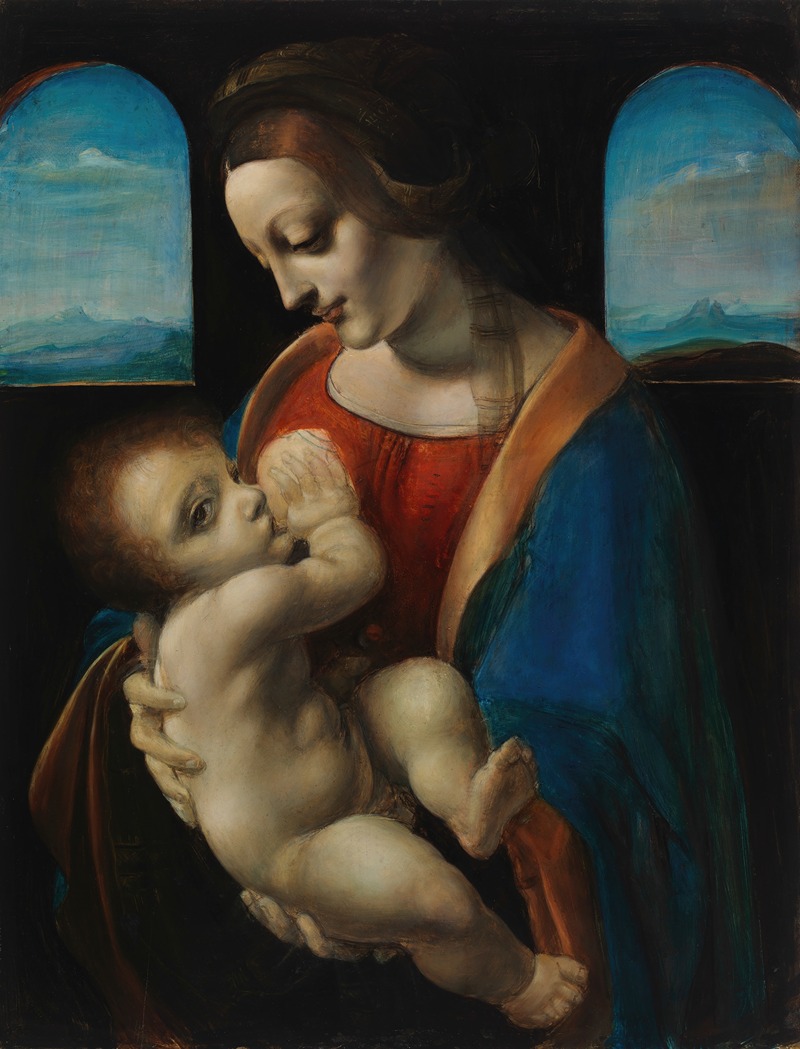
Madonna Litta, copy after Leonardo da Vinci
A hand-painted replica of Magnus Enckell’s masterpiece Madonna Litta, copy after Leonardo da Vinci, meticulously crafted by professional artists to capture the true essence of the original. Each piece is created with museum-quality canvas and rare mineral pigments, carefully painted by experienced artists with delicate brushstrokes and rich, layered colors to perfectly recreate the texture of the original artwork. Unlike machine-printed reproductions, this hand-painted version brings the painting to life, infused with the artist’s emotions and skill in every stroke. Whether for personal collection or home decoration, it instantly elevates the artistic atmosphere of any space.
The "Madonna Litta" is a renowned painting traditionally attributed to Leonardo da Vinci, depicting the Virgin Mary nursing the Christ Child. However, the version titled "Madonna Litta, copy after Leonardo da Vinci by Magnus Enckell" refers to a later interpretation by the Finnish artist Magnus Enckell. This work reflects Enckell's engagement with Renaissance art and his interest in religious themes, which were prevalent in his oeuvre.
Magnus Enckell (1870–1925) was a prominent Finnish symbolist painter, known for his exploration of light, color, and form. He was a central figure in the Finnish art scene at the turn of the 20th century and played a significant role in the development of modern art in Finland. Enckell's work often delved into themes of spirituality and human emotion, which aligns with the subject matter of the "Madonna Litta."
The original "Madonna Litta" is housed in the Hermitage Museum in Saint Petersburg, Russia. It is one of the most celebrated works attributed to Leonardo, although there has been scholarly debate regarding the extent of Leonardo's involvement, with some suggesting that it may have been completed by one of his pupils. The painting is noted for its delicate portrayal of maternal tenderness and the serene expression of the Madonna, characteristics that have captivated audiences for centuries.
Enckell's copy of the "Madonna Litta" would have been an homage to the Renaissance master, reflecting his admiration for Leonardo's technique and thematic depth. While specific details about Enckell's version are limited, it can be inferred that his rendition would incorporate his unique style, possibly emphasizing the symbolic and emotional aspects of the scene, consistent with his broader body of work.
Enckell was known for his use of vibrant colors and a more modernist approach to form, which might have influenced his interpretation of the "Madonna Litta." His work often balanced between realism and symbolism, suggesting that his version of the painting could offer a fresh perspective on the classical composition, infusing it with a contemporary sensibility of his time.
Throughout his career, Enckell was deeply influenced by his travels and studies in Europe, particularly in Paris, where he was exposed to various artistic movements. This exposure likely informed his approach to copying and interpreting works from the Renaissance, as he sought to bridge the gap between historical art and modern expression.
In summary, while specific information about Magnus Enckell's copy of the "Madonna Litta" is scarce, it represents an intersection of Renaissance inspiration and early 20th-century Finnish art. Enckell's engagement with such a subject underscores his reverence for classical themes and his desire to reinterpret them through a modern lens. His version of the "Madonna Litta" would stand as a testament to the enduring influence of Leonardo da Vinci and the adaptability of his themes across different eras and artistic movements.






